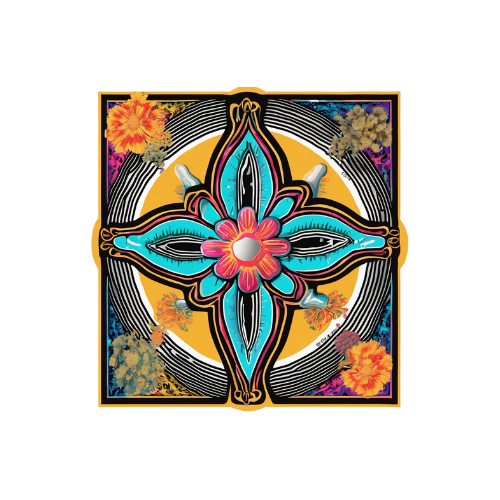Notifications
Oysters
Abstract
The genus Pleurotus, commonly referred to as Oyster Mushrooms, encompasses a diverse group of saprotrophic fungi known for their ecological importance, culinary value, and remarkable adaptability across a range of environments and substrates. Characterized by their decurrent gills, lateral or absent stipes, and often fan- or oyster-shaped caps, members of this genus exhibit a wide spectrum of colors and growth behaviors depending on species and environmental conditions. This entry reviews the general morphological traits, spore characteristics, growth behavior, and cultivation parameters associated with the genus, with emphasis on their versatility for both commercial and small-scale mushroom production.
1. Introduction
Oyster Mushrooms, classified under the genus Pleurotus, are globally distributed saprotrophs primarily responsible for the decomposition of hardwoods and other lignocellulosic materials. They are among the most cultivated mushrooms worldwide due to their fast colonization, tolerance of varied substrates, and high nutritional value. Notable species include Pleurotus ostreatus (Blue Oyster), Pleurotus pulmonarius (Phoenix Oyster), Pleurotus citrinopileatus (Golden Oyster), and Pleurotus djamor (Pink Oyster). These fungi display remarkable phenotypic variation while retaining core morphological and ecological characteristics.
2. Gill Formation
All Pleurotus species share the trait of decurrent gills—gills that extend down the stipe—typically densely packed and broad. The hymenium is highly fertile, with prolific spore production contributing to their rapid natural spread. Gill color varies with species and age, ranging from white to grey, pink, yellow, or cream.
3. Microscopy and Spore Morphology
Spores are typically cylindrical to subcylindrical, smooth-walled, and hyaline under transmitted light. Spore sizes generally range from 7–12 µm in length, though exact dimensions vary between species. Spore prints range from white to lilac-grey, pink, or pale yellow depending on species. Clamp connections are present throughout the hyphal networks. Monomitic hyphal systems contribute to the soft, fibrous consistency characteristic of oyster mushrooms.
4. Macromorphology
4.1 Cap (Pileus)
Caps are most commonly fan- or oyster-shaped with inrolled margins when young, flattening or becoming wavy with age. Sizes vary significantly by species, from small (30–70 mm) to large (up to 200 mm). Coloration spans a wide spectrum including grey, blue, white, pink, yellow, and tan. The surface is smooth to slightly fibrillose, sometimes viscid in humid environments.
4.2 Stipe (Stem)
Stipes, when present, are lateral or off-center, short, fibrous, and often reduced or absent in tightly clustered growths. Color typically matches the cap or is paler. Attachment points are sturdy in youth but become brittle as fruiting bodies mature.
4.3 Performance Characteristics
Pleurotus species are characterized by rapid colonization and fruiting cycles, with some strains fruiting within 10–21 days post-inoculation. They demonstrate high adaptability to environmental fluctuations and thrive on a variety of substrates, making them highly accessible to cultivators at all skill levels.
5. Nutritional Substrates and Cultivation Conditions
5.1 Primary Substrates
Oyster Mushrooms excel on lignocellulosic substrates, with high yields achievable through simple or advanced techniques.
- Straw (Wheat, Oat, Barley):
- Widely used due to availability and effectiveness.
- Hardwood Sawdust (with Bran Supplements):
- Enhances consistency and yields in indoor block cultures.
- Agricultural Waste (Corncobs, Cotton, Banana Leaves, etc.):
- Sustainable and effective across climates.
- Cardboard/Paper Products:
- Effective for small-scale, hobbyist grows.
5.2 Bulk Substrates
Oysters perform best on well-hydrated substrates with structural integrity and aeration.
- Pasteurized Straw + Gypsum: Standard and cost-effective.
- Hardwood Blocks with Supplements: Ideal for commercial consistency.
- Coir, Bagasse, Agricultural Blends: Provide versatility with supplementation.
5.3 Additives and Supplements
- Gypsum (CaSO₄): Stabilizes pH and improves texture.
- Bran or Soy Hulls: Enhance nitrogen and protein content.
- Worm Castings: Occasionally used to increase microbial diversity.
6. Fruiting Parameters
- Colonization Temperature: 68–81°F (20–27°C), species-dependent
- Fruiting Temperature: 50–75°F (10–24°C), varies by species (e.g., Pink Oyster prefers warmer, Blue Oyster prefers cooler)
- Relative Humidity: 85–95% RH during fruiting
- CO₂ Levels: Regular fresh air exchange necessary to prevent malformation
- Light: Indirect natural or artificial light on a 12/12 schedule promotes cap development and pigmentation
7. Summary
The genus Pleurotus encompasses some of the most versatile and productive mushrooms cultivated worldwide. Their rapid life cycle, tolerance of a wide array of substrates, and adaptability to diverse environmental conditions make them ideal for both beginners and commercial growers. Core morphological features include decurrent gills, lateral stems, and fan-shaped caps, while species-level variation introduces a spectrum of colors and environmental preferences. Proper management of humidity, hydration, fresh air, and light ensures dense, visually appealing flushes with high culinary and commercial value.
